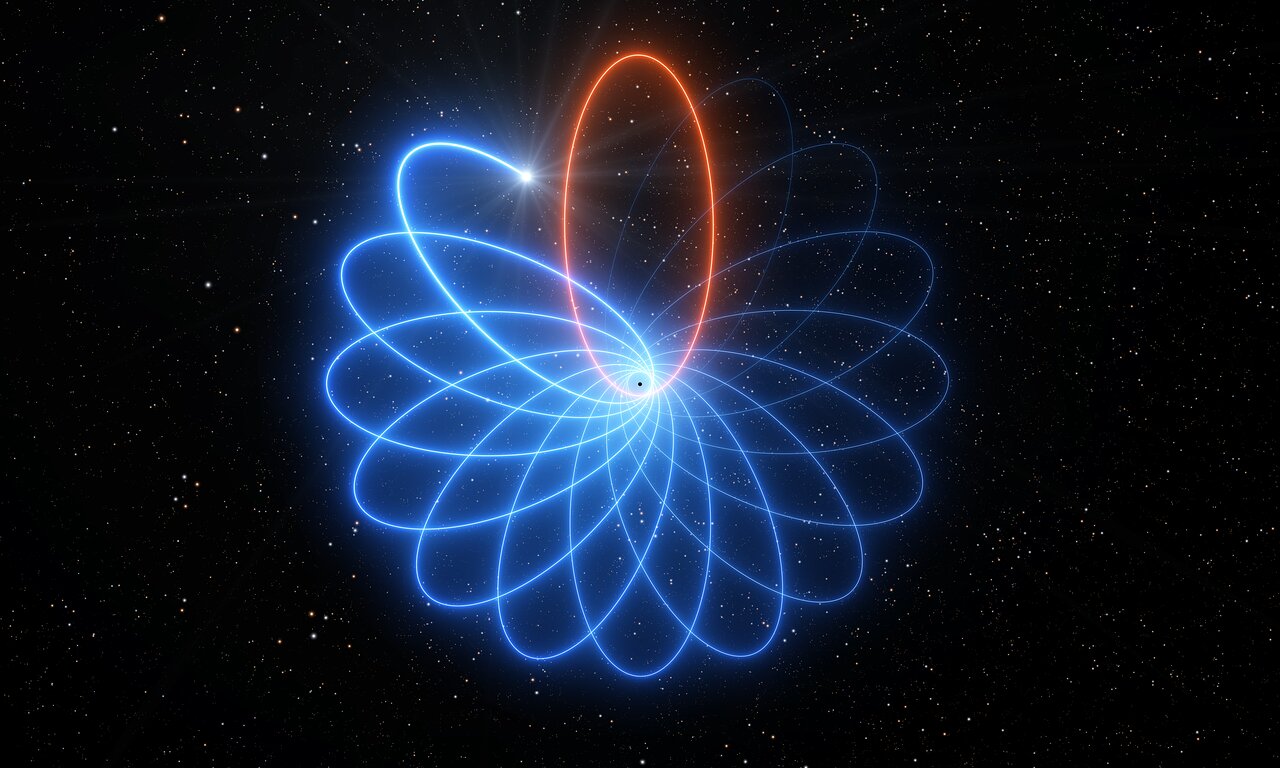
Observations made with ESO’s Very Large Telescope (VLT) have revealed for the first time that a star orbiting the supermassive black hole at the centre of the Milky Way moves just as predicted by Einstein’s general theory of relativity...
Read More

Observations made with ESO’s Very Large Telescope (VLT) have revealed for the first time that a star orbiting the supermassive black hole at the centre of the Milky Way moves just as predicted by Einstein’s general theory of relativity...
Read More
Coreless optical fibre: If a photonic crystal fibre is twisted, it does not require a core with a different refractive index to trap light at its centre. Credit: Science 2016/MPI for the Science of Light
Researchers have discovered a new mechanism for guiding light in photonic crystal fibre (PCF). PCF is a hair-thin glass fibre with a regular array of hollow channels running along its length. When helically twisted, this spiralling array of hollow channels acts on light rays in an analogous manner to the bending of light rays when they travel through the gravitationally curved space around a star, as described by the general theory of relativity.
Optical fibres act as pipes for light...
Read More
This simulation of the large-scale structure of the universe reveals the cosmic web of galaxies and the vast, empty regions known as voids. Credit: Image by Nico Hamaus, Universitäts-Sternwarte München, courtesy of The Ohio State University
A lot of information contained in cosmic voids, study suggests. An international team of astronomers reports that they were able to achieve 4X better precision in measurements of how the universe’s visible matter is clustered together by studying the empty spaces in between. Researchers looking for new ways to probe gravity and dark energy adopted a new strategy: looking at what’s not there.
Paul Sutter, Ohio State University, said that the new measurements can help bring astronomers closer to testing Einstein’s general theory of relativity, which des...
Read More
Recent Comments